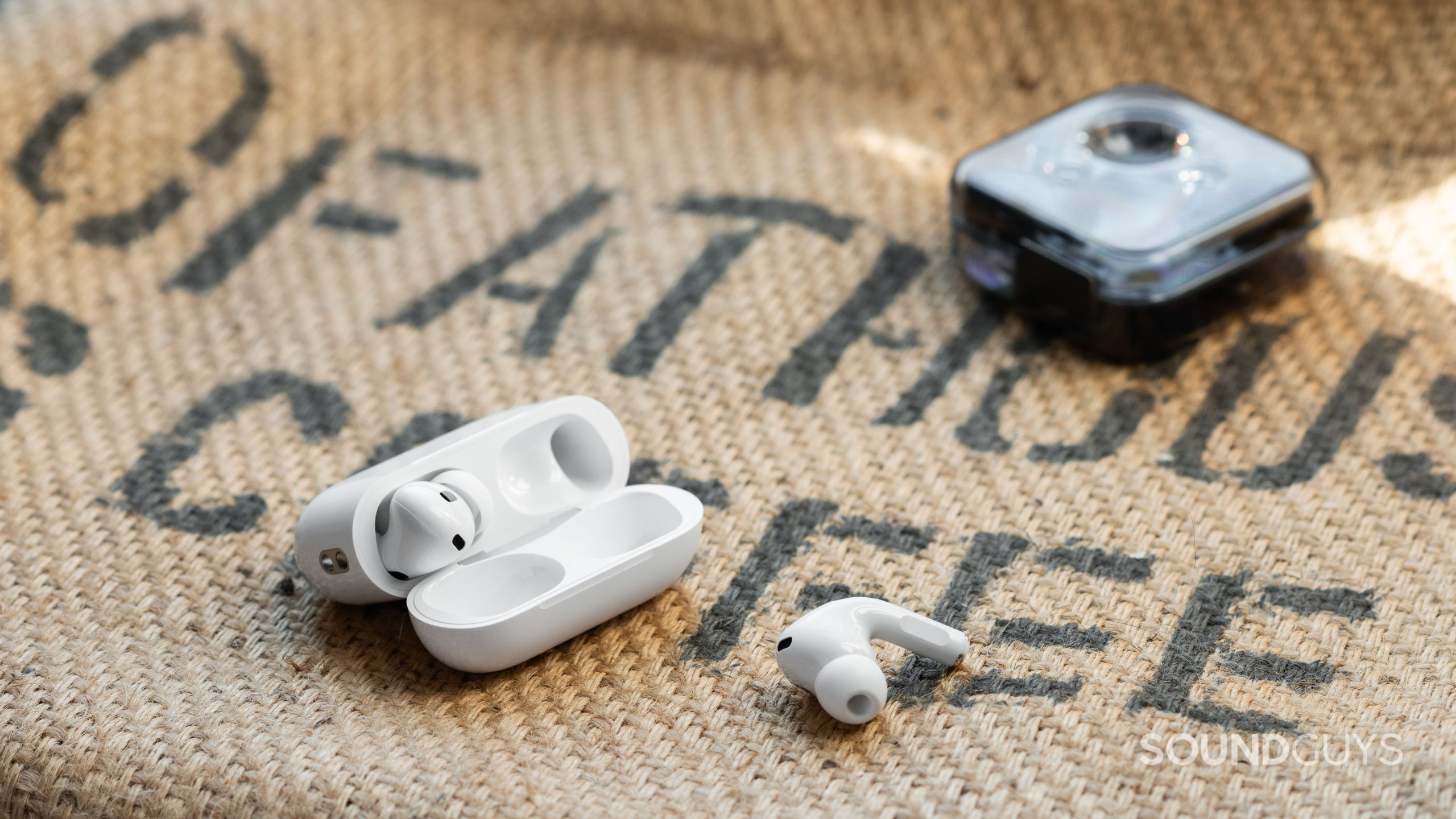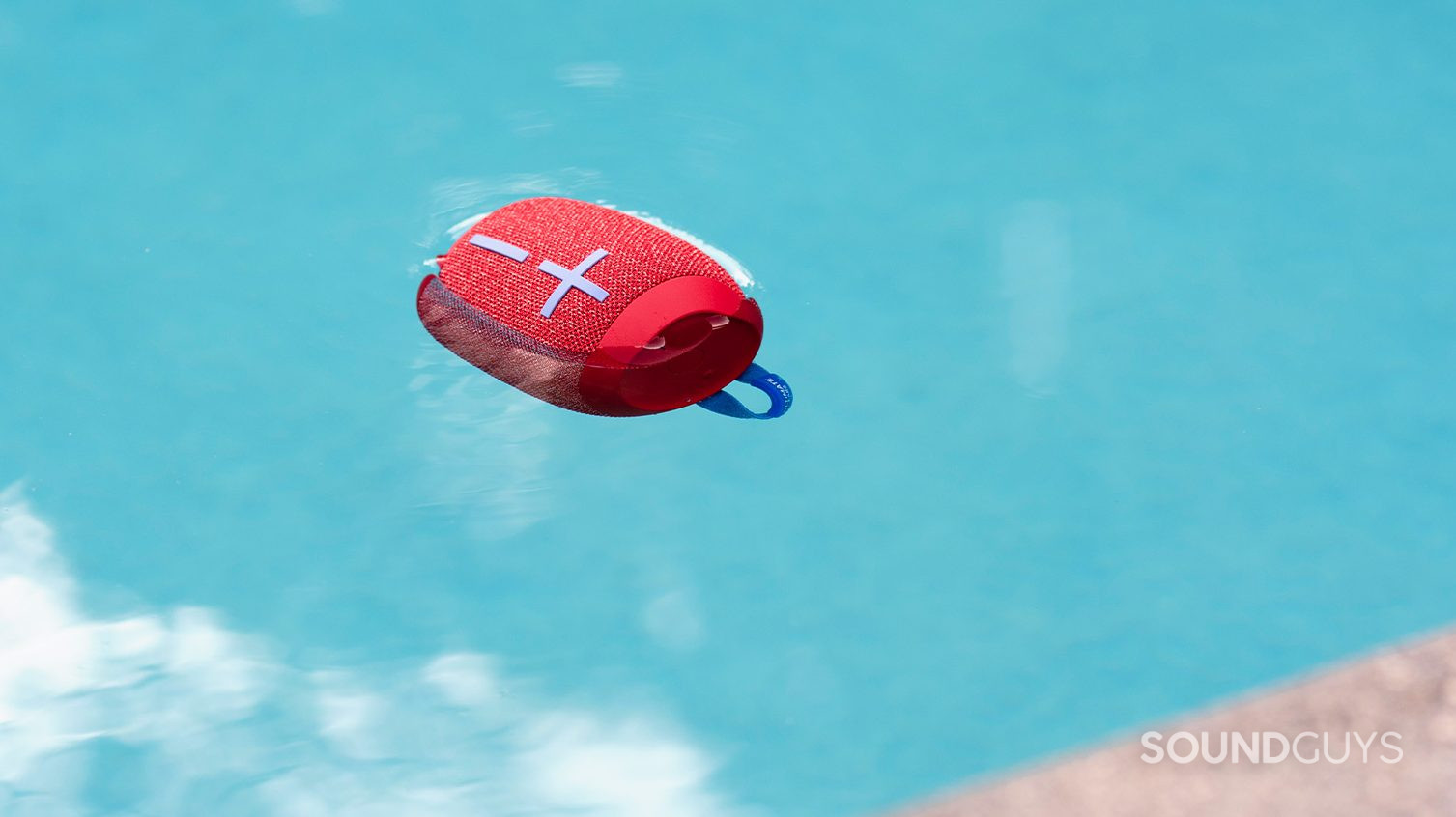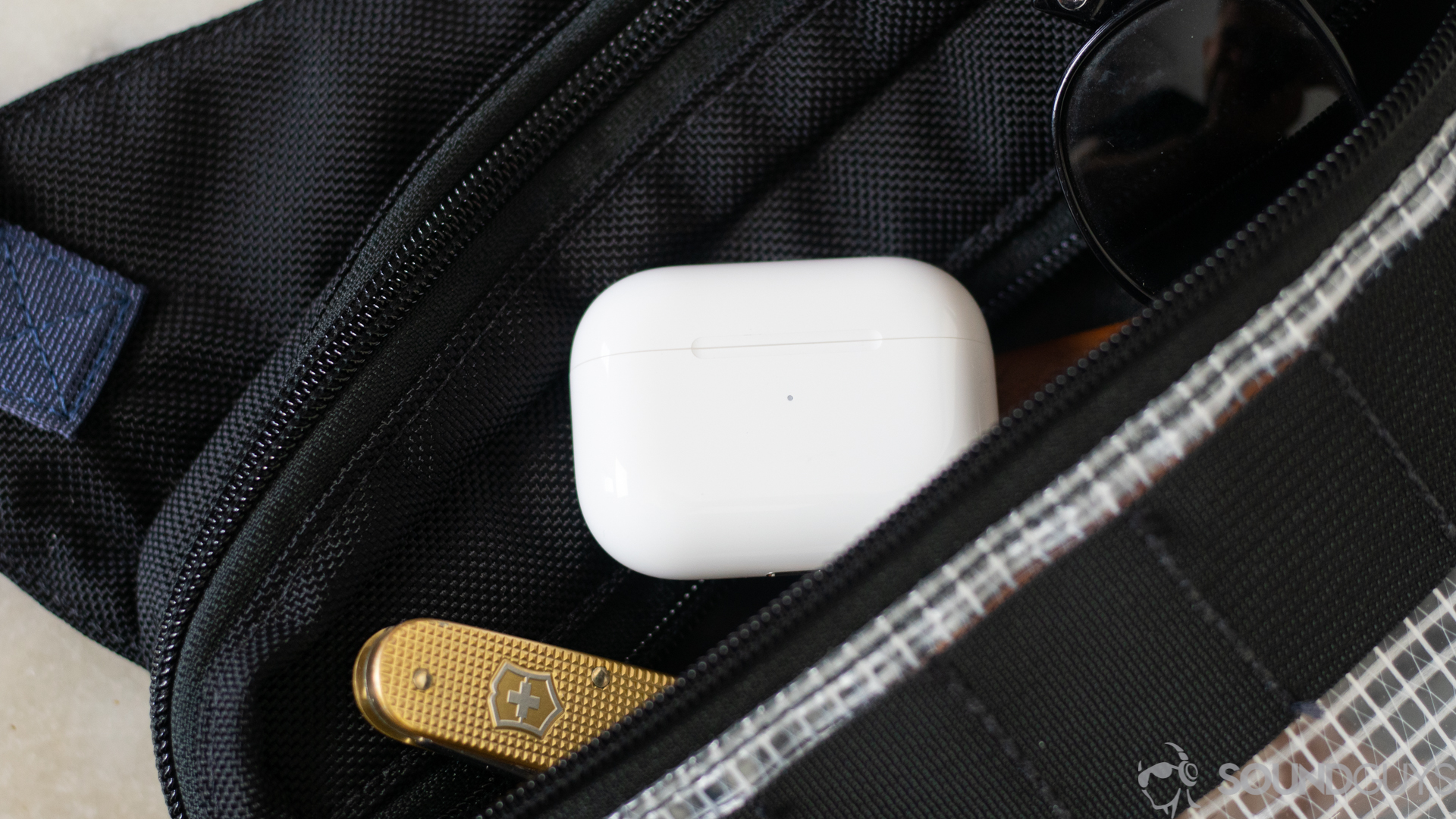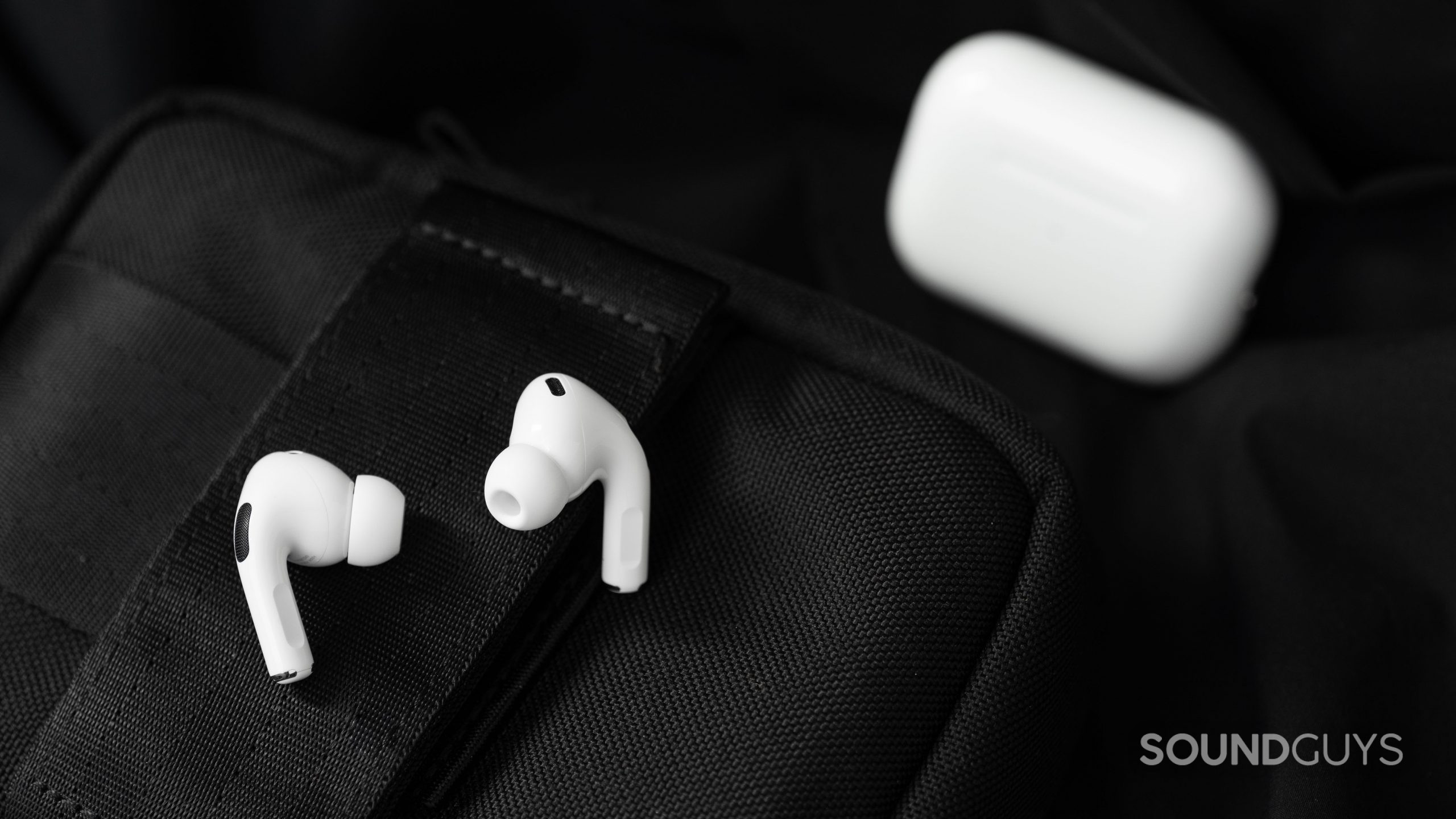All products featured are independently chosen by us. However, SoundGuys may receive a commission on orders placed through its retail links. See our ethics statement.
Are Apple AirPods waterproof?
April 9, 2025
Water resistance and waterproofing are important things to look out for when you’re shopping for new tech, and that’s especially true if you’re interested in buying something as small and droppable as the Apple AirPods. Thankfully, almost every model of AirPods you can buy right now has some form of water resistance, but it’s not totally uniform across every device. Let’s go over how waterproof different AirPods are, as well as what you should know about water resistance and waterproof ratings.
- April 9, 2025: added the AirPods 4 and AirPods 4 with Active Noise Cancellation water-resistance ratings.
- September 18, 2025: noted the updated ingress protection ratings of the new AirPods Pro 2.
Do all Apple AirPods have water resistance?

Not every generation and iteration of the Apple AirPods has some form of water resistance, but most of what you’ll find in a store these days do. Here’s a full list of the water resistance ratings for each AirPods model:
- AirPods 1: no IP rating
- AirPods 2: no IP rating
- AirPods 3: IPX4 (sweat and rain)
- AirPods 4: IP54 (sweat and rain)
- AirPods 4 with Active Noise Cancellation: IP54 (sweat and rain)
- AirPods Pro 1: IPX4 (sweat and rain)
- AirPods Pro 2: IPX4 (sweat and rain)
- AirPods Max: no IP rating
If you have the AirPods 1, AirPods 2, or AirPods Max, you should take careful consideration not to expose them to any water. Newer models of AirPods can handle sweat and light splashes of water fine.
Waterproof vs. water-resistant: what’s the difference?

The answer is in the name. When something is water resistant, it can resist the negative effects of getting wet—generally limited to getting splashed or sprayed—up to a certain volume of water and amount of time. Waterproofing also has limits, but the key difference is submersion.
If something is certified to function normally after complete submersion in water, it’s considered waterproof. If it’s only rated for surviving splashes or jets of water, it’s not considered waterproof. In consumer tech, these distinctions are relayed through a product’s ingress protection (IP) rating.
An IP rating describes how durable a device is, based on two environmental factors: dust and water. When reading a device’s IP rating, there will be two numbers associated with it (written out as IP65, for instance). The first number relates to the device’s dust resistance, and the second relates to its water resistance. When something has an IP rating for one kind of contaminant, but not the other, the unrated criteria is denoted with an X. All models of Apple AirPods with water resistance have an IPX4 rating, which means water resistance and no dust resistance.
| Water-resistant | Waterproof | Can withstand | |
|---|---|---|---|
IPX0 | Water-resistant | Waterproof | Can withstand Not water-resistant |
IPX1 | Water-resistant ✓ | Waterproof | Can withstand Dripping water (1 mm/min) Limit: vertical drips only |
IPX2 | Water-resistant ✓ | Waterproof | Can withstand Dripping water (3 mm/min) Limit: Device max tilt of 15° from drips |
IPX3 | Water-resistant ✓ | Waterproof | Can withstand Sprays Limit: Device max tilt of 60° from sprays |
IPX4 | Water-resistant ✓ | Waterproof | Can withstand Splashes, omnidirectional |
IPX5 | Water-resistant ✓ | Waterproof | Can withstand Water jets (12.5 L/min) Example: Squirt guns |
IPX6 | Water-resistant ✓ | Waterproof | Can withstand Strong water jets (100 L/min) Example: Powerful water guns |
IPX7 | Water-resistant | Waterproof ✓ | Can withstand Complete submersion Limit: 1 m. for 30 min |
IPX8 | Water-resistant | Waterproof ✓ | Can withstand Complete submersion Limit: 3 m. for 30 min |
As you can see in the table above, higher ratings can be considered waterproof, and the difference between an IPX6 rating and IPX7 amounts to how deep a device can be submerged before risking its protection becoming compromised—remember, the deeper you go in water, the more pressure it exerts on you! Higher ratings for dustproofing also indicate a greater degree of protection, but these days, it’s pretty uncommon to see anything below a 6 rating when a device has dust proofing.
| Dust-resistant | Dustproof | Can withstand... | |
|---|---|---|---|
IP0X | Dust-resistant | Dustproof | Can withstand... Not dust-resistant |
IP1X | Dust-resistant ✓ | Dustproof | Can withstand... A solid object > 50 mm |
IP2X | Dust-resistant ✓ | Dustproof | Can withstand... A solid object > 12.5 mm |
IP3X | Dust-resistant ✓ | Dustproof | Can withstand... A solid object > 2.5 mm |
IP4X | Dust-resistant ✓ | Dustproof | Can withstand... A solid object > 1 mm |
I5X | Dust-resistant ✓ | Dustproof | Can withstand... Dust-protected, small solid objects won't interfere with device operation |
IP6X | Dust-resistant | Dustproof ✓ | Can withstand... Any amount of dust, completely dust-tight |
What is an IPX4 rating

All current-generation Apple AirPods earbuds have an IPX4 rating. This means your Apple AirPods (3rd generation) and Apple AirPods Max have no dust protection rating, but are considered protected from splashes, drips, and sprays of water. Basically, if you get caught out in the rain, or you sweat a lot at the gym, these will perform without issue. Again, this isn’t the case with products like the Apple AirPods Max or the first and second-generation AirPods—you’ve got to be more careful keeping these products dry.
What to do if your AirPods get wet

No model of AirPods is rated as waterproof. If you get them very wet—maybe they get hit with the spray of a hose, you shower with them, or drop in the pool—there’s a chance they’ll be broken forever. However, to maximize the chance of being able to use your AirPods again after something like that happens, there are a few steps you can take.
The first thing to do after your AirPods have taken an unfortunate dunk, is to dry them off thoroughly with a soft, dry, lint-free cloth. After that, the most important thing you can do is leave it alone until the interior dries out on its own—don’t put the earbuds back in the case to charge, or leave the case on a wireless charger. Just set it all down separately on a table and leave it alone for at least 24 hours. Apple doesn’t recommend using anything to hasten that drying, like moving your device close a radiator or other direct heat source. All this goes just the same if your AirPods charging case gets wet too.
If you follow those steps, and a few days later, you find that your AirPods sound normal and hold a charge just fine, congratulations! You’re lucky enough not to need a replacement. If your AirPods don’t work after following these step, you are very likely out of luck, but who knows, you may be able to find a new pair on sale.

Thank you for being part of our community. Read our Comment Policy before posting.